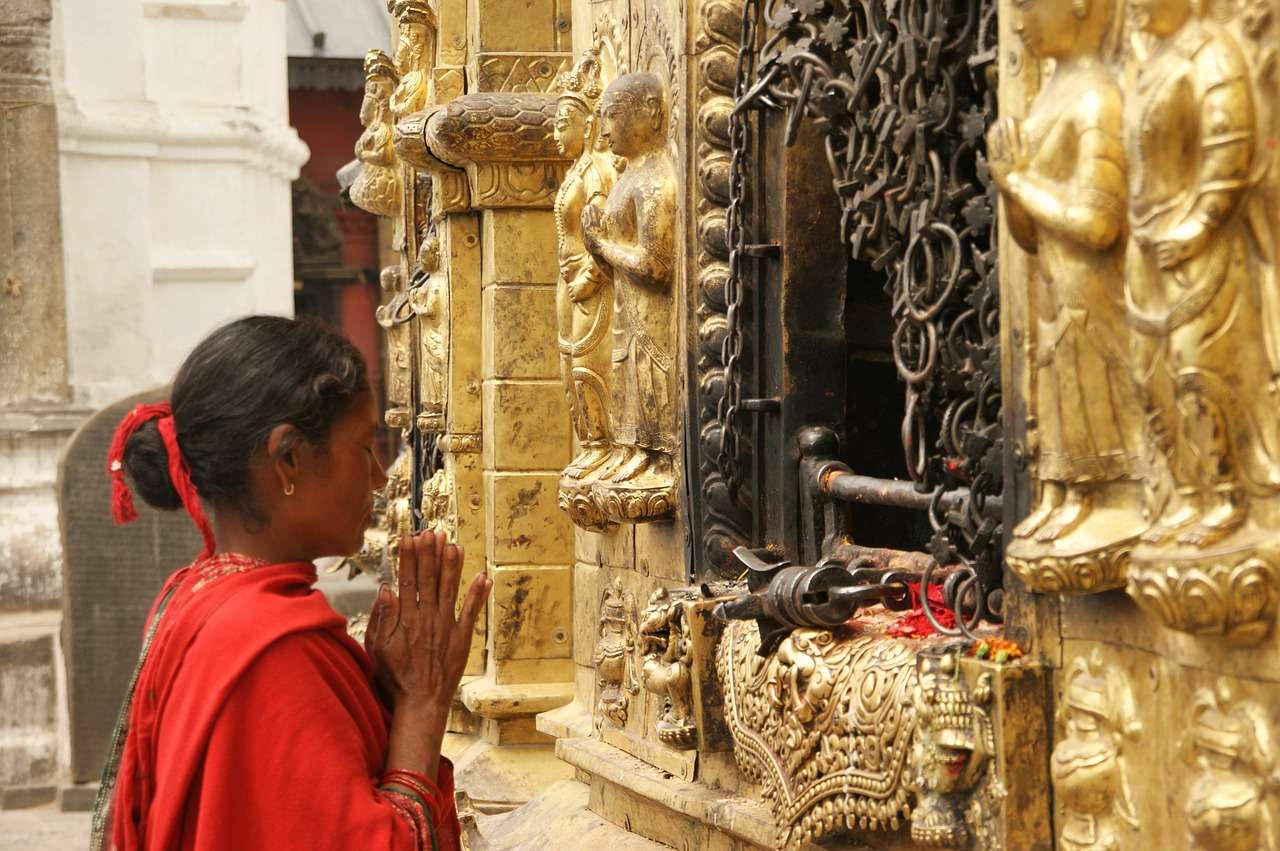Let’s talk about Newari (Newa) festivals name and about it.
Saparu – Gaijatra
On this day people, whose family members died in that year, dressed up as cows and paraded in the town. It is believed that cows help the departed soul to enter heaven easily. Another remarkable thing is the humor and satire presented on this day.
Pancha Dan
Pancha Dan is observed by Buddhists only, especially by Shakyas and Bajracharyas. Buddhist antiques are displaced and gigantic effigies of Dipankar are paraded around the town. However, the main highlight of the festival is the giving away of alms to Buddhist monks.
Yanya Punhi
Yanya Punhi is dedicated to lord Indra, the king of heaven. This is a week-long festival that begins after the erection of Yosin, a ceremonial pole. The main feature of this festival in Kathmandu is a week-long display of the gigantic mask of Aakash Bhairab and the procession of Kumari, the living goddess along with other two living gods Ganesh and Kumar.
Mohani – Dashain
Mohani is observed for two weeks. It is observed with great joy. Barley seeds are planted on the first day which is known as Nahla Swanegu. It is nurtured for nine days. On the day of Astami, kuchhi bhoya (a feast with two manas i.e. about half a kilo of beaten rice) is eaten by gathering family members. On Nawami, (Syakotyako) Durga is worshipped with goats, cocks sacrificed. Nahlaswan i.e. the fresh shoot of barley is also offered. On the concluding day of the festival, i.e. on Chalan, processions with scimitars take place in various places of the Newar settlements, which is commonly known as Payah.
Swanti – Tihar
Swanti also known as Tihar, the festival of light lasts for five days. Swanti stands for Swanhu Ttithi which means three days in Nepalbhasa (also known as Newari but the proper official word is Nepalbhasa). Among the five days of tihar, three days are mainly celebrated. On the day of Laxmi puja, Laxmi, the goddess of wealth is worshipped and in the evening lights are burnt to invite Laxmi. Mhapuja is the day of worshiping one’s body. This is New Year’s Day according to Nepal Era. Kija Puja, the last day of the swanti, is dedicated to the brothers. Sisters worship their brothers on this day.
Sakimila Punhi
Sakimila Punhi (Sakimana Punhi) or the full moon day of boiled arum is the festival of eating arum, sweet potato, and fried grains. Halimali Bwayegu (exhibiting figure designs of fried grains) with Dapha Bhajan or Dhalcha Bhajan (chanting religious hymns) takes place in the evening in every section of the settlements.
Bala Chahre
This is the festival of scattering seeds (sadhbiu) and praying for the souls of the departed in Pashupati, Kathmandu. In many places, it is celebrated by gathering the members of Milah Guthi (a kind of social association) and banqueting together.
Yomari Punhi
It is a harvest festival of worshipping the newly brought rice and Annapurna, the goddess of grains, for good harvest. Yomari Punhi lends its name to Yomari (a typical steamed cake of rice flour dough stuffed with a mixture of sesame and molasses), which is offered in Dhukoo (store room) and eaten on this day. In the evening kids go around the neighborhood to beg Yomari.
Ghayh Chaku Sanhlhu
Also known as hamoh sanhlu, this festival is observed according to the solar calendar. On this day, people take a bath early in the morning and offer sugar candy, pills of sesame and molasses, etc to their priests. They too eat yams, spinach, sweets of sesame, and molasses to warm their body. People rub mustard oil over their bodies in the sun.
Shree Panchami
Shree Panchami or Basanta Panchami is concerned in honor of Saraswati, the Hindu goddess of learning. Artists, teachers, and students gather at Saraswati temple in different places. Buddhists worship Manjushree on this day.
Sila Chahre
There are 24 Shivaratris in a year, among which Sila Chahre is celebrated as Maha Shivaratri. Shiva is worshiped on this day. people take a bath and fast on this day. People who stay awake for the whole night get success in every work.
Holi Punhi
Holi Punhi, the festival of color begins officially with the raising of the huge ceremonial pole at the Basantapur of Kathmandu. Though celebrated for a week, Holi Punhi, or (full moon day -march) is the main day. This festival is believed to be observed since the period of lord Krishna. People play with water and color and roam around the streets.
Pahan Chahre
Pahan chare or Pasa Chare is especially observed in Kathmandu only. On this day, Mahadev in the form of Pisach (Lukumahadyah) is worshipped. Thus the festival is also known as Pisach Chaturdasi. Different palanquin circumambulation takes place in Kathmandu for a week.
Biskah Jatra
The word ‘Biskah’ or ‘Bisket’ is said to be derived from ‘Bee Sikah’, which means ‘after the death of serpents’. It is said that this festival began to be celebrated after the death of serpents, serpents described in various legends. Even though it is said so, from various chronicles, sacred writings, inscriptions, and the culture of Bisket, it is known that it was not used in the sense of death of serpents. This festival is celebrated mainly in Bhaktapur and Thimi with the Chariot festival, tongue boring festival, and with music and dances in other parts of the valley as well.
Machhendra Nath Jatra
There are two Machhendra nath festivals, namely Rato Machhendranath (Bunga dyah) Jatra and Seto Machhendranath (Janmah dyah) Jatra. The main feature of these festivals are pulling of a huge four-wheel chariot of Machhendranath. The former, observed in Lalitpur, starts from Pulchowk and ends in Jawahlakhel, where the ritual display of the legendary vest (bhoto) takes place. It is observed for a month.
Swanya Punhi
Budhha Jayanti- full moon day April/May is the day of birth, attainment of enlightenment, and death of Lord Budhha, the light of Asia. On this day worship of Budhha takes place in Buddhist monasteries and especially in Swambhu Stupa of Kathmandu.
Sithi Nakhah
The sixth day of the bright lunar fortnight is dedicated to Lord Kumar. This is the day when Kartikeya Kumar (Sithi Dyah) was born. On this day, people take a bath, and houses are cleaned. Wells and conduits are also cleaned on this day, this is also the day of eating Chatamari- a typical rice flour bread, and Wo- a flat cake of mashed lentils. It is the last festival of the year that the Newars observe.


